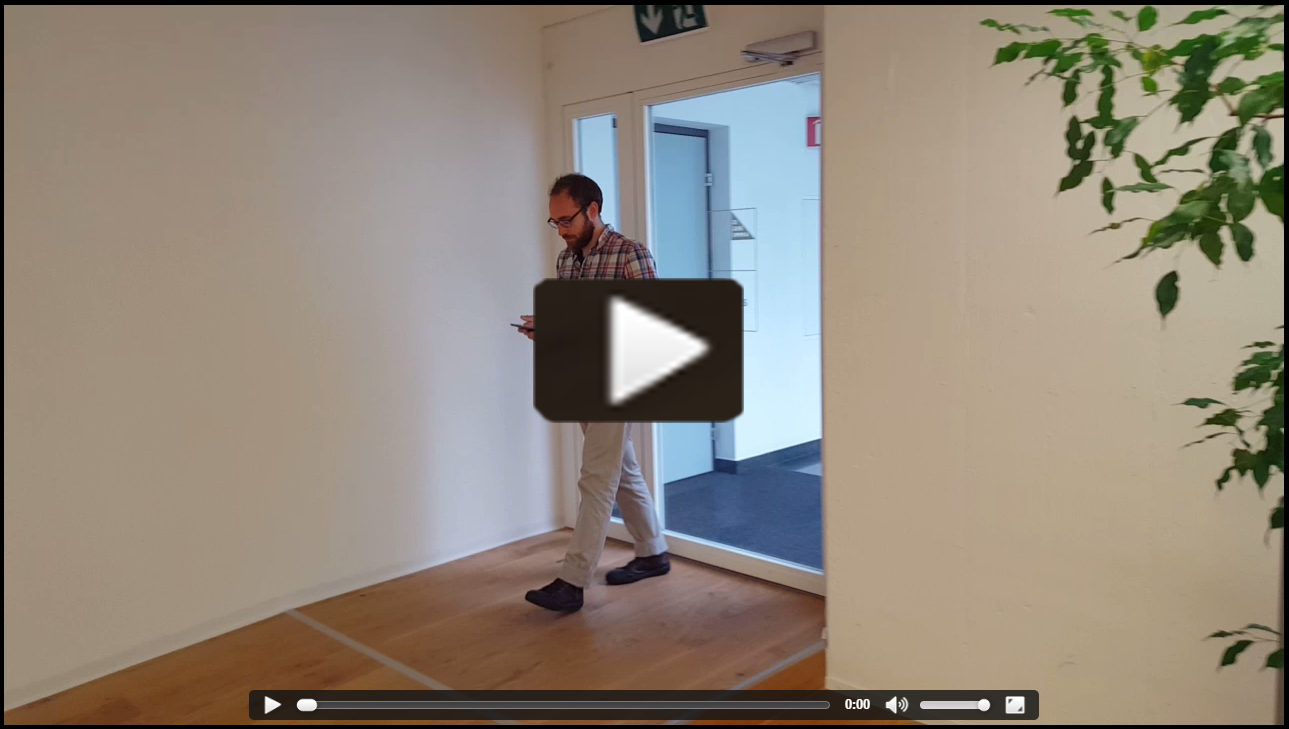IDDASS
 |
2016-2017. Interests detection during a shopping session. |
IDDASS is a software library analysing the user's behaviour during a shopping session in a physical store. The innovation lies in the high accuracy in which the behaviour patterns are recorded. IDDASS will be integrated in a loyalty application running on smartphones, and combine its data with the one coming from existing e-commerce statistical analysis tools. It will combine the online and offline data, allowing to know more about the customer lifecycle experience: the user is followed through her/his whole experience, from the website to his interaction with his enviornment through the mobile loyalty app that rewards her/him with digital bonuses.
TaM uses its knowledge in indoor positioning and added research in sensors. It combines position indoor, different smartphone sensors and phone usage information to compute behaviours of clients in a shopping scenario which in turn allow market-oriented decisions.

This project is a collaboration between TaM and Origammi who will integrate the research into their product ECHOO. ECHOO increases loyalty of customers and quality of the data shop owners require. This is possible because ECHOO tracks online, mobile and in-store behaviours. IDDASS is this last module and fits nicely into the overall picture: a client side recovers raw data from the mobile, within the showcase application, and the server side provides the API to analyse this information.

Already a prototype has been deployed in the offices of Origammi in Zurich. The purpose of this demo version is to show interesed parties that when a client visits their shop, the zones through which she or he passes are temporarily recorded to improved their shopping experience.
Typical Scenario
The following scenario explains how and where IDDASS is important in the life-cycle of the system and the relation between shop and client:
It is the second time within a week that Daniel saw the same pair of black shoes on Jelmoli's website. He goes on checking the online shop both those times to look at the available colours. All this information is added to Daniel's profile, and the fact that he doesn't go further in the online buying process isn't a surprise: his history shows that he always tries new shoes before buying them. He check where those shoes are sold on his mobile app on his way to work. The app informs him of hot deals in the nearest shop. It's a good occasion for him to use those vouchers he has received on his profile for being a loyal customer.
A few days later, as soon as Daniel enters the Jelmoli store, his loyalty application is automatically launched and shows him some articles in which he could be interested, including of course the already mentioned black shoes. But Daniel don't even took his mobile out of his pocket and heads directly to the shoes department. This behaviour is recorded by the loyalty app and indicates to the system that Daniel is "busy", or perhaps "in a hurry", but in any case it is not the right time to disturb him, by sending push notifications for instance. By analysing the sensors' data produced by his smartphone, the loyalty app records that Daniel arrives to the shoes, turns on his left (where the searched shoes are), stops 15 seconds, and then continues his path by walking slower than before. What happened? It seems that Daniel watched the shoes, but didn't try them. The system could propose a discount to motivate Daniel to still buy it, but since his motivation dropped so quickly as soon as he saw the shoes, there is certainly something wrong. Perhaps the shoes are much heavier than expected or perhaps their back is too hard, which usually causes him blisters? Anyway, no chance to motivate Daniel. However, the history of the profile mentions that Daniel was previously interested by another pair of brown shoes, before he saw the black ones and completely forgot about the brown ones. Since Daniel is now wandering towards the exit, at low speed, and probably a bit disappointed since he bought nothing else, the system determines that he is ready to get a push notification. The message reminds him about the former brown shoes and proposes him even a discount of 10%. Of course, it is a "second choice" for Daniel, but since anyway the "first choice" doesn't exist anymore, plus the fact that he came to the shop "for nothing" and plus this sudden 10% discount, Daniel walks back, tries these braun shoes, and since they fit him perfectly he buys them using his 10% personalised promotion. At the same time the store manager sees the profile of Daniel and can approach him with a personalized consultancy based on his shopping history.
